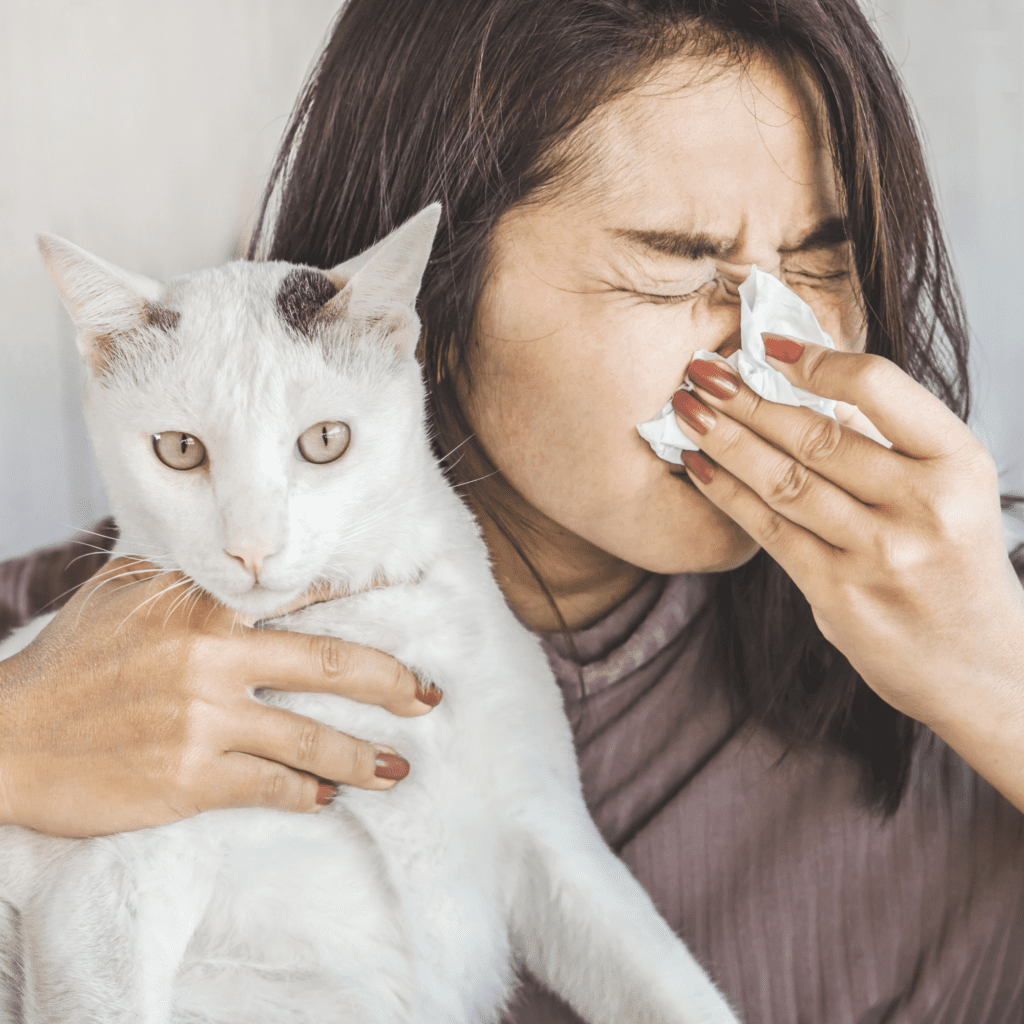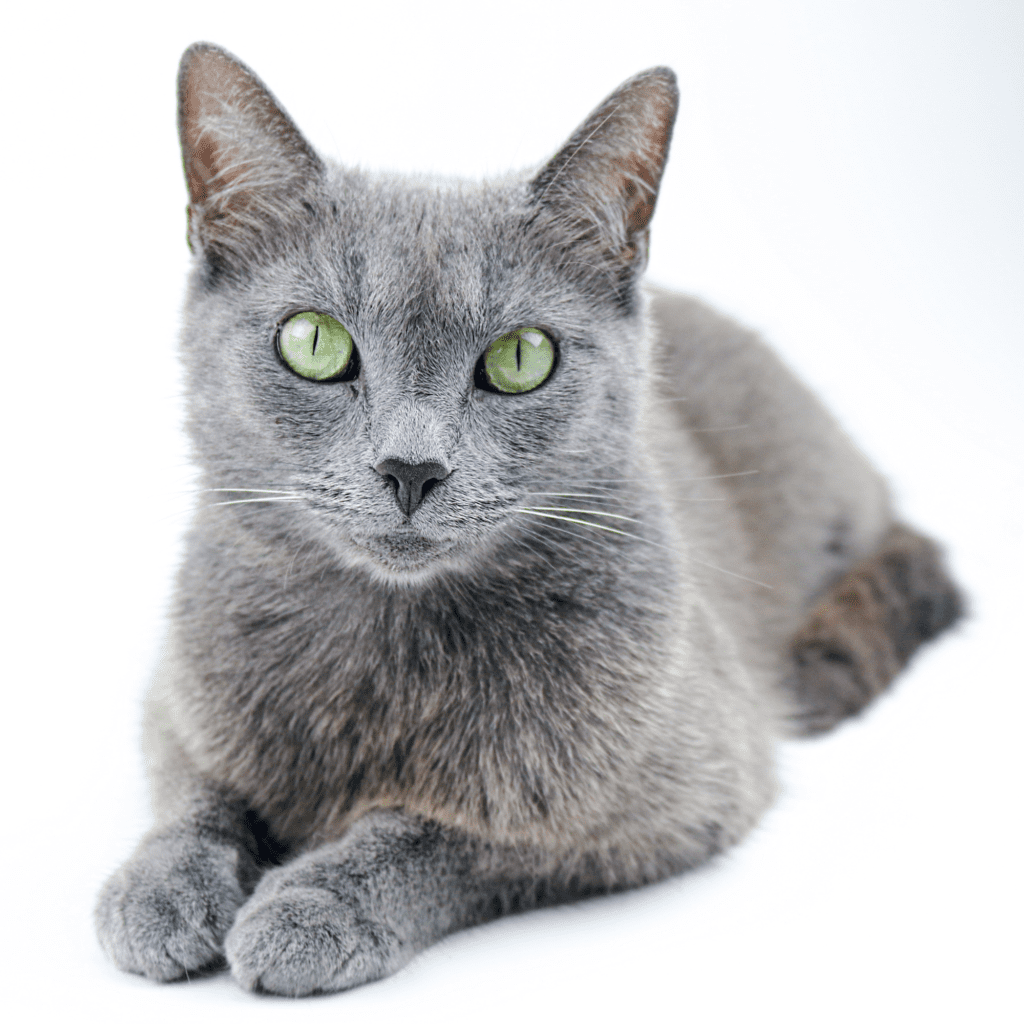Find the Best Hypoallergenic Cats: Top 10 Breeds to Consider
This post may contain affiliate links, which means I’ll receive a commission if you purchase through my link, at NO EXTRA COST TO YOU
For many people, allergies can make owning a cat seem impossible. The sneezing, itchy eyes, and runny noses often scare potential cat owners away. However, several hypoallergenic cat breeds can significantly reduce allergic reactions. Although no cat breed is entirely allergen-free, certain breeds produce fewer allergens, making them great options for people with allergies.

Let’s explore the top 10 hypoallergenic cat breeds that can be a wonderful addition to your home without triggering those pesky allergy symptoms.
1. Hypoallergenic Siberian Cat
Siberian cats often surprise people by being hypoallergenic, despite their long, thick coats. What makes them a top choice for allergy sufferers is that they produce lower levels of the Fel d 1 protein, which triggers most cat allergies. Their luxurious coat sheds less frequently than expected, which means fewer allergens floating around your home.
Siberians are also known for their friendly and affectionate personalities. They love spending time with their families and get along well with other pets, making them a perfect companion.

2. Hypoallergenic Balinese Cat
The Balinese cat, often called the “long-haired Siamese,” is another fantastic hypoallergenic breed. They produce less of the Fel d 1 protein, which makes them a suitable choice for people with mild to moderate allergies. Despite their silky, medium-length coat, they shed very little, which helps keep allergens to a minimum.
Balinese cats are highly social and intelligent. They love to engage with their owners and can be quite talkative. Their playful and affectionate nature makes them great pets for families and individuals alike.

3. Hypoallergenic Devon Rex Cat
With its short, wavy coat, the Devon Rex sheds far less than many other breeds. Their minimal shedding reduces the spread of dander, making them a popular hypoallergenic option. The Devon Rex’s coat is also easier to maintain, so regular grooming keeps allergens at bay.
Devon Rex cats are known for their playful, almost dog-like behavior. They’re highly active, curious, and enjoy being the center of attention. These cats love to snuggle and will quickly become a loving part of any household.

4. Hypoallergenic Cornish Rex Cat
The Cornish Rex is another hypoallergenic breed with a short, wavy coat. Their coat consists of just the soft underlayer, which means they don’t shed much. With regular grooming, you can further reduce allergens in your home. This makes the Cornish Rex a fantastic choice for people with allergies.
Cornish Rex cats are incredibly active and playful. They have a lot of energy and enjoy running, jumping, and exploring their surroundings. These cats love human interaction and will thrive in homes where they can get plenty of attention.

5. Hypoallergenic Sphynx Cat
The Sphynx is perhaps the most well-known hypoallergenic cat breed, mainly because they’re hairless. Without a coat to shed, Sphynx cats release fewer allergens into the air. However, they still need regular bathing to remove oils and dander from their skin, which helps keep allergens under control.
Sphynx cats are known for their affectionate, friendly nature. They love being around their owners and enjoy snuggling for warmth, especially since they don’t have fur to keep them cozy. Their outgoing personalities make them excellent companions for families and individuals alike.

6. Hypoallergenic Oriental Shorthair Cat
The Oriental Shorthair, a close relative of the Siamese, has a sleek, short coat that sheds minimally. This breed produces fewer allergens, which helps make them more tolerable for allergy sufferers. With regular grooming, you can keep their coat clean and free of excess dander, which further reduces the risk of allergic reactions.
Oriental Shorthairs are social, intelligent, and vocal. They form strong bonds with their owners and enjoy being part of the family. Their playful and curious nature makes them excellent pets for active households.

7. Hypoallergenic Russian Blue Cat
Russian Blues are another hypoallergenic breed known for producing less of the Fel d 1 protein. Their short, dense coat also sheds minimally, which helps reduce allergens in the home. These cats are a great choice for people who suffer from mild allergies but still want to enjoy the company of a feline friend.
Russian Blues are known for their calm and reserved personalities. They may take a little time to warm up to new people, but once they do, they become loyal and affectionate companions. Their gentle nature makes them great pets for families and individuals who prefer a quieter environment.

8. Hypoallergenic Bengal Cat
Bengal cats are famous for their exotic appearance, but they’re also hypoallergenic. They produce less dander than many other breeds, and their short, sleek coat sheds very little. Regular grooming will help minimize allergens even further, making them a good option for allergy sufferers.
Bengals are highly active and energetic. They love to play, climb, and explore their surroundings. These cats need plenty of mental and physical stimulation, so they’re best suited for households that can provide lots of interaction and engagement.

9. Hypoallergenic Javanese Cat
The Javanese, another relative of the Siamese, is a hypoallergenic breed with a single-layer coat that sheds minimally. They produce fewer allergens than many other breeds, which makes them an excellent choice for allergy sufferers. With regular grooming, you can keep allergens at bay and enjoy your cat without constant sneezing.
Javanese cats are known for their intelligence and affectionate nature. They love being around their owners and can often be found following them around the house. Their playful and social personalities make them ideal for families or individuals looking for an interactive companion.

10. Hypoallergenic LaPerm Cat
The LaPerm is a unique cat breed with a curly coat that sheds very little. Their low-shedding coat helps reduce allergens in the home, making them a great choice for people with allergies. Despite their thick fur, regular grooming is relatively easy, and it helps keep allergens under control.
LaPerms are affectionate and love to cuddle with their owners. They have a friendly, outgoing personality and enjoy being around people. Their playful and curious nature makes them a fun addition to any household.

Why Do These Cats Cause Fewer Allergies?
Hypoallergenic cat breeds tend to produce fewer allergens, primarily because they release less of the Fel d 1 protein. This protein, found in a cat’s saliva, urine, and skin, is the main cause of allergic reactions in humans. When cats groom themselves, they transfer this protein to their fur, and as the fur sheds, the allergens spread throughout the home.
Hypoallergenic breeds tend to shed less, which means fewer allergens get released into the air. Additionally, some breeds naturally produce lower levels of the Fel d 1 protein, which further reduces the risk of allergic reactions.
How to Reduce Cat Allergens
Even with a hypoallergenic cat, you can take steps to further minimize allergens in your home:
- Regular grooming: Brushing your cat frequently helps reduce shedding and remove excess dander.
- Bathing: Some hypoallergenic breeds, like the Sphynx, benefit from regular baths to remove oils and dander from their skin.
- Cleaning: Vacuuming carpets, furniture, and cat bedding regularly helps remove allergens from your living space.
- Air purifiers: Using an air purifier can help trap allergens and improve air quality in your home.
Conclusion
Owning a cat doesn’t have to be off-limits for people with allergies. These hypoallergenic breeds offer allergy sufferers the chance to enjoy the companionship of a feline friend without the constant discomfort of sneezing and itchy eyes. Whether you prefer the playful Bengal or the affectionate Sphynx, there’s a hypoallergenic breed that can fit your lifestyle.
By choosing one of these breeds and maintaining a regular grooming routine, you can welcome a cat into your home and still keep your allergies in check.






